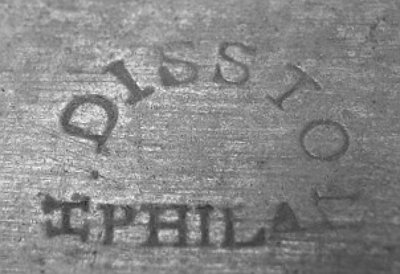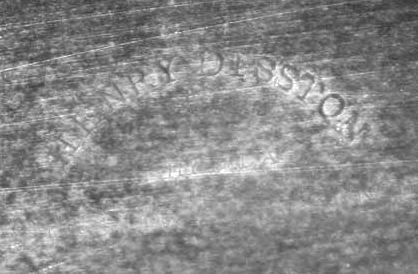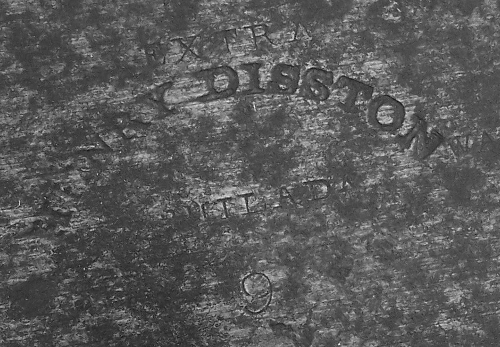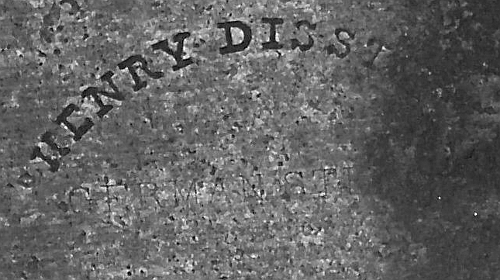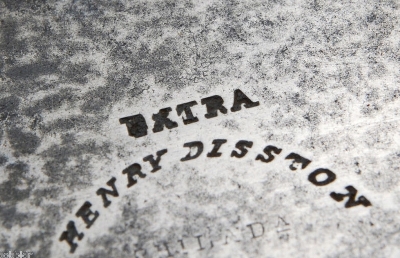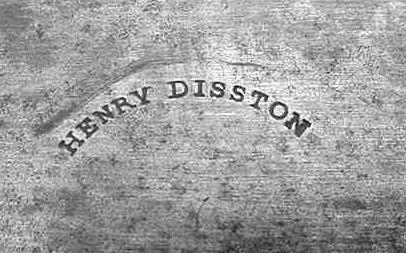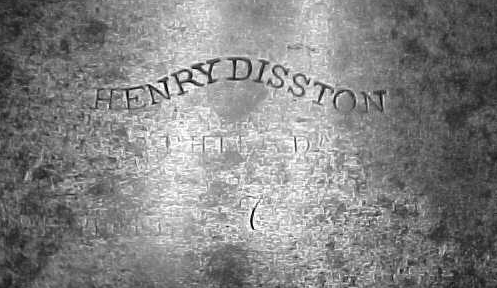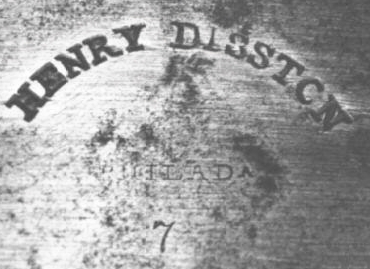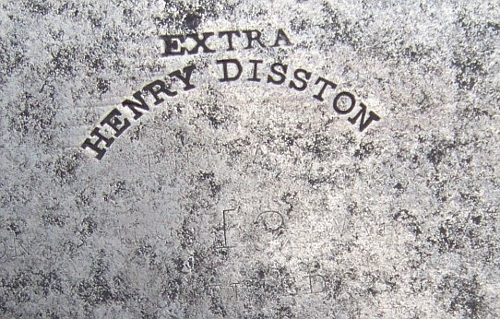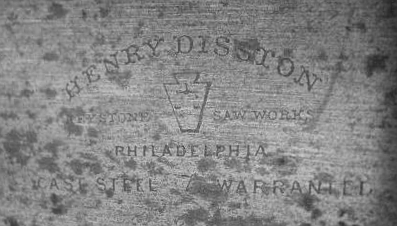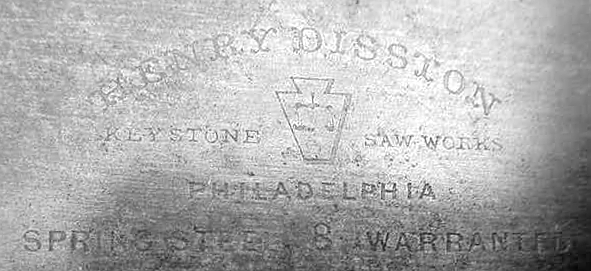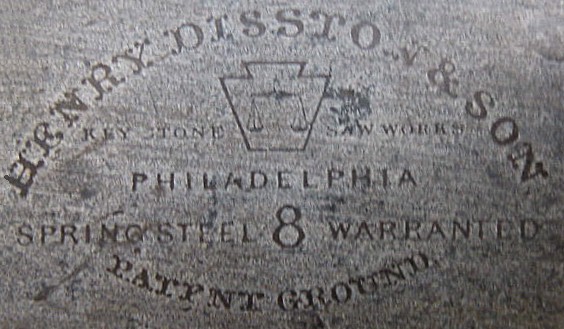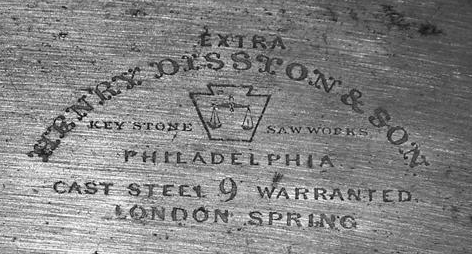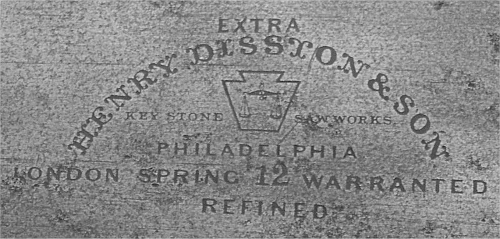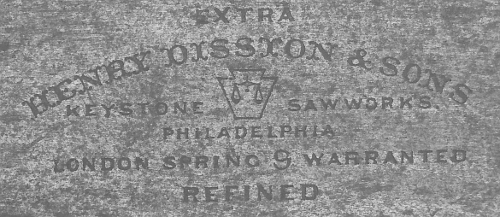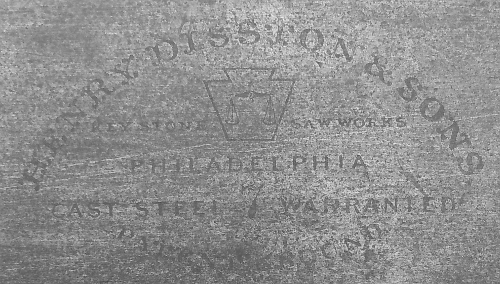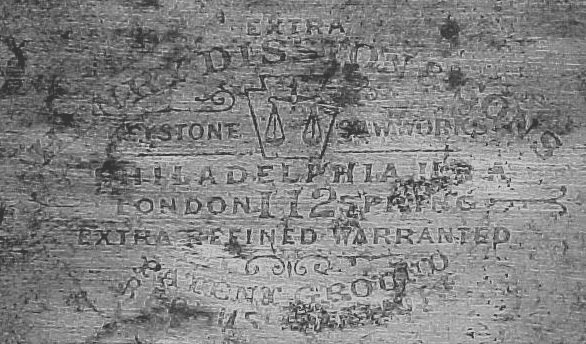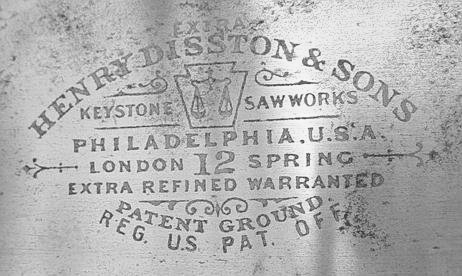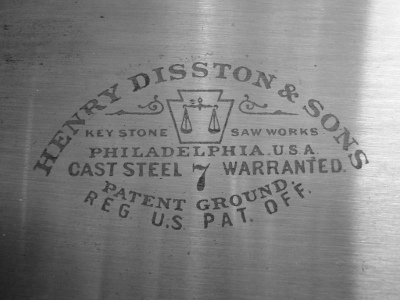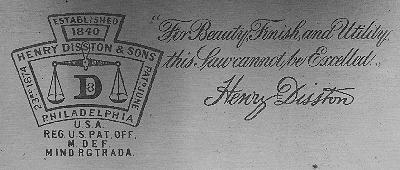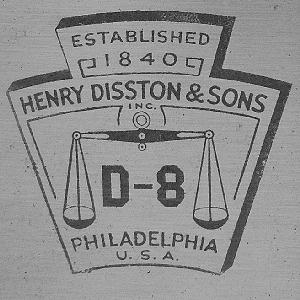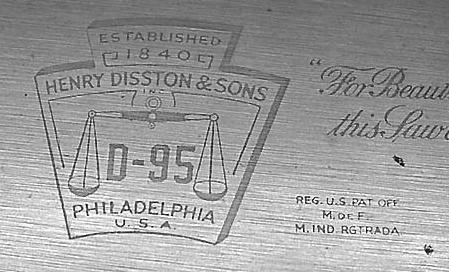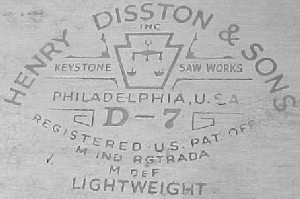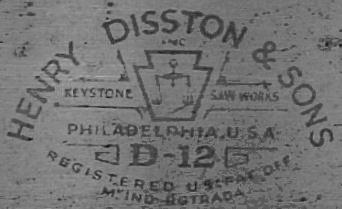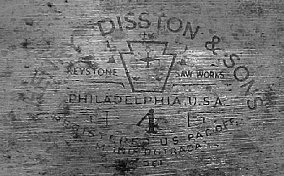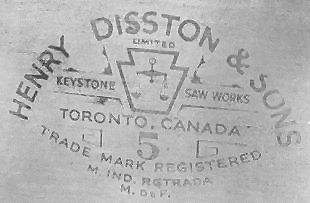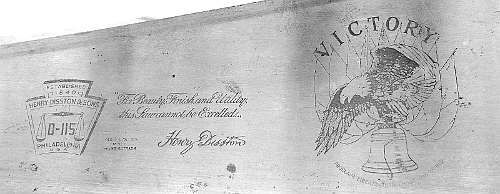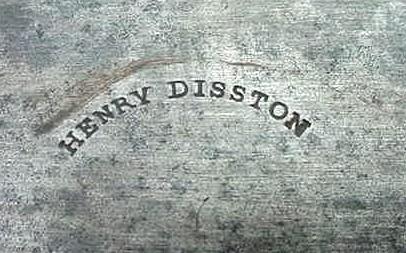
|
Brand identity has always been important to manufacturers. It's particularly true for someone who is convinced he makes a good product. Not only does the maker want to make a sale, he wants the buyer to come back for more and tell his friends about it as well. This is the reason for branding merchandise.
|
|
Henry Disston started out stamping his name on handsaws the same way as anyone else in the business, with a steel punch. It's a challenge to stamp your name in a hardened saw plate in one try, and even more so to strike multiple advertisements like "Warranted" or "Spring Steel" and adding two or three eagle stamps to really set off your product. The stamps come out uneven or too light to see, especially after the saw gets a little rust over it. Disston was one of the earliest saw makers to use the brass medallion or label screw to identify his product in a way that could not be hidden by the inevitable oxidation of steel. Although stamps and etches have the disadvantage of becoming obscured, they are useful for brand identity at the time the product is being sold. Disston continued to use them as well as the medallions to identify the brand. Disston was possibly the first saw maker to use etching to brand his saws, in 1865. This allowed more elaborate design features than a stamp. I have tried to show a large sample of stamps and etches as they changed over time. The grouping below is not an exact order in time, nor is it intended to be a type study. The medallion study will be more helpful for dating a handsaw's year of manufacture than the etch. If experience is any indication of the future, I can count on readers sharing images of etches and stamps showing variations on the designs shown on this page. Ten years of reader contributions that necessitated my constant revision was what made the medallion study expand and become a more useful resource. I appreciate your email. Erik von Sneidern |
|
